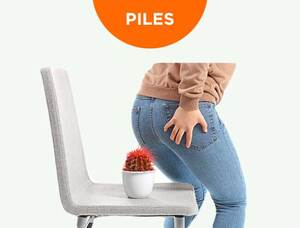Introduction
Piles, also known as hemorrhoids, are a common condition characterized by swollen and inflamed blood vessels in the anal area. They can cause discomfort, pain, and bleeding, impacting daily life. Fortunately, numerous treatment options are available to manage piles effectively.
This article aims to provide comprehensive insights into Piles Treatment, offering guidance and relief for those affected by this condition.
Understanding Piles
Piles occur when the blood vessels in the anal canal become swollen or inflamed, often due to increased pressure during bowel movements, chronic constipation, or prolonged sitting. Symptoms can vary from mild itching and discomfort to severe pain and bleeding. It’s essential to seek medical advice if you suspect you have piles to receive proper diagnosis and treatment.
Self-Care Measures:
Dietary Modifications: Incorporate high-fiber foods such as fruits, vegetables, whole grains, and legumes into your diet to soften stools and ease bowel movements, reducing strain on hemorrhoids.
Hydration: Drink plenty of water throughout the day to maintain soft and regular bowel movements, preventing constipation, which can exacerbate piles.
Good Toilet Habits: Avoid straining during bowel movements and minimize time spent on the toilet. Use soft, moistened toilet paper or wipes to clean the anal area gently.
Sitz Baths: Soak the anal area in warm water for 10–15 minutes several times a day to relieve pain, itching, and inflammation associated with piles.
Over-the-Counter Remedies: Use over-the-counter creams, ointments, or suppositories containing ingredients like hydrocortisone or witch hazel to reduce swelling and discomfort.
Medical Interventions:
Rubber Band Ligation: A common outpatient procedure where a rubber band is placed around the base of the hemorrhoid to cut off blood flow, causing it to shrink and fall off.
Sclerotherapy: Injection of a chemical solution into the hemorrhoid to shrink it by causing scar tissue formation, reducing blood flow.
Infrared Coagulation (IRC): A minimally invasive procedure that uses infrared light to heat and scar the hemorrhoid tissue, leading to its shrinkage and alleviation of symptoms.
Hemorrhoidectomy: Surgical removal of hemorrhoids, typically reserved for severe cases or when other treatments have failed.
Newer Technologies and Techniques:
Laser Treatment: Laser energy is used to shrink hemorrhoids, reduce pain, and promote healing, often performed on an outpatient basis with minimal discomfort.
Doppler-Guided Hemorrhoidal Artery Ligation (DGHAL): A minimally invasive procedure that targets the blood vessels supplying the hemorrhoid, leading to its reduction and symptom relief.
Stapled Hemorrhoidopexy: Also known as stapling, this procedure involves stapling the hemorrhoid to cut off blood flow, reducing its size and symptoms.
Conclusion
Consultation with a TACA Health Care professional is essential to determine the most appropriate treatment approach based on the severity of the piles and individual medical history. With the right combination of self-care measures, medical interventions, and lifestyle modifications, individuals can find relief from piles and improve their quality of life. Remember to always seek medical advice before starting any new treatment regimen.













Comments